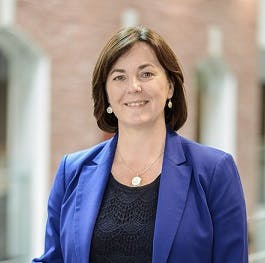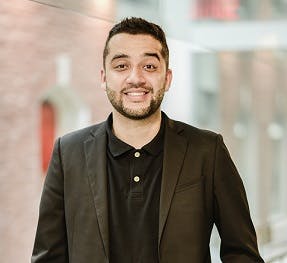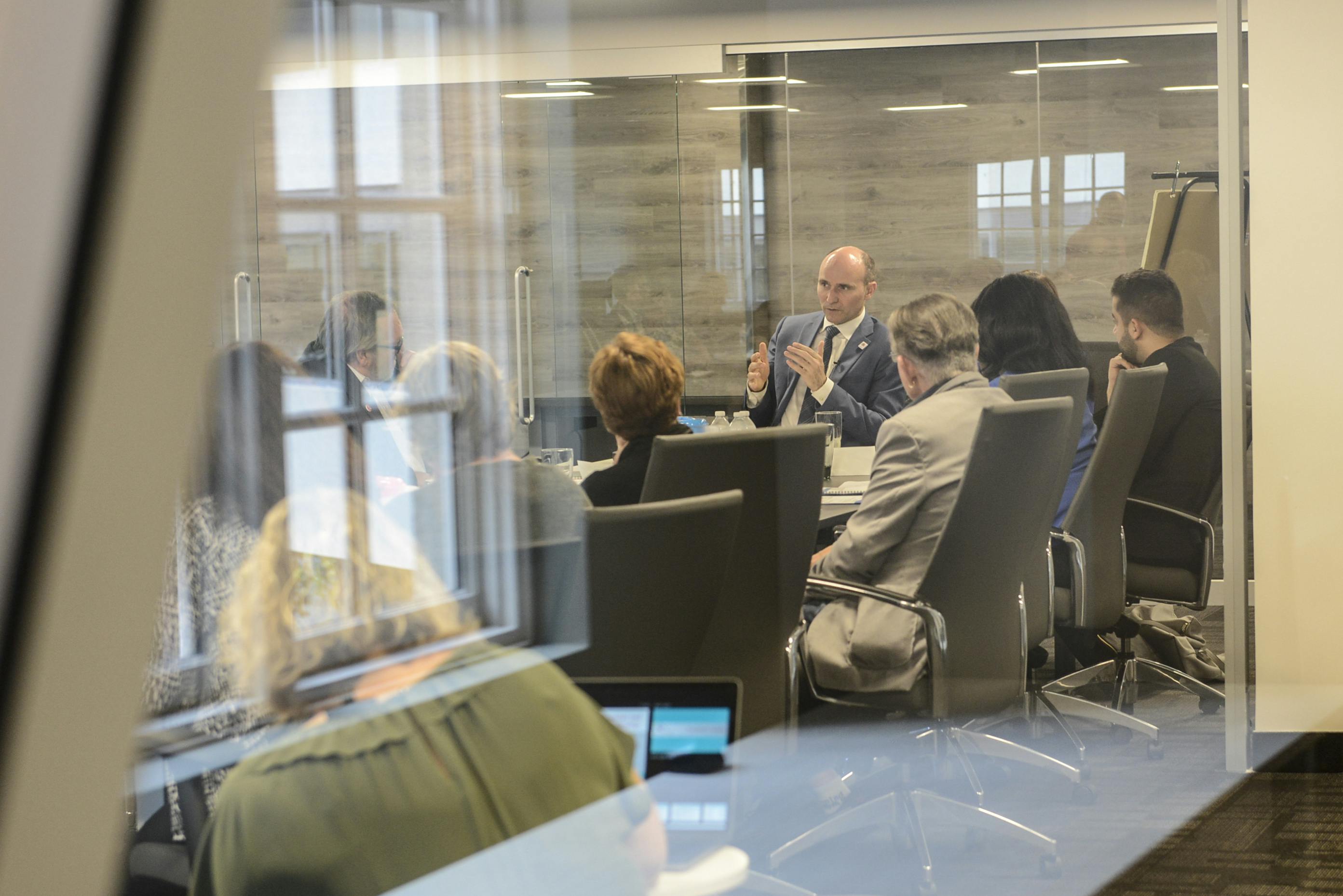Social Innovation & Social Finance Strategy
Consultation has concluded
The Social Innovation and Social Finance Strategy Co-Creation Steering Group of experts and leading social innovators, with the Government of Canada, is co-creating a strategy to improve and strengthen our communities and regions through social innovation and social finance.
To better inform the development of the Strategy, the Steering Group has launched an online consultation to hear about new and innovative ideas in communities and regions across Canada.
We want to enable and support communities and organizations to advance new and innovative approaches to persistent social problems.
The overall goal is to improve the lives of the most vulnerable Canadians, and help our communities and regions thrive and flourish in an inclusive and sustainable way. This means helping all Canadians access good jobs and homes, healthy food and strong social connections.
 If you’re interested in learning more about this engagement, we invite you to read the Consultation Document.
If you’re interested in learning more about this engagement, we invite you to read the Consultation Document.
We invite you to provide a written or visual submission of your ideas by email, using following email address: social_innovation_sociale@hrsdc-rhdcc.gc.ca.
The Social Innovation and Social Finance Strategy Co-Creation Steering Group of experts and leading social innovators, with the Government of Canada, is co-creating a strategy to improve and strengthen our communities and regions through social innovation and social finance.
To better inform the development of the Strategy, the Steering Group has launched an online consultation to hear about new and innovative ideas in communities and regions across Canada.
We want to enable and support communities and organizations to advance new and innovative approaches to persistent social problems.
The overall goal is to improve the lives of the most vulnerable Canadians, and help our communities and regions thrive and flourish in an inclusive and sustainable way. This means helping all Canadians access good jobs and homes, healthy food and strong social connections.
 If you’re interested in learning more about this engagement, we invite you to read the Consultation Document.
If you’re interested in learning more about this engagement, we invite you to read the Consultation Document.
We invite you to provide a written or visual submission of your ideas by email, using following email address: social_innovation_sociale@hrsdc-rhdcc.gc.ca.
-
Social Enterprise: A Tool to Enhance Rural & Urban Community Assets!
CLOSED: This discussion has concluded.
By David LePage, Principal with Accelerating Social Impact CCC, Ltd17 April 2017
With the growth of big box stores and franchised retail outlets, the emergence of social enterprise is an invigorating option in the retail landscape. Many social enterprises arise as new retail entries directly responding to a community need.
Example #1 – What happens when rural small business owners retire?
However, two recent transactions illustrate how social enterprise is also a valuable tool that can be used to sustain and enhance existing community assets.
One example demonstrates how social enterprises can sustain assets in a rural community when a family-owned business owner retires. The other example shows how a social enterprise can increase the social value of multiple government-owned commercial properties in an urban area through the creation of a blended value property portfolio.
Answer: A social enterprise steps in to work with the family to keep the business going and growing.
The Yellow Barn produce store and restaurant is a fixture for many customers in the rural (but urbanizing) communities of Abbotsford and Chilliwack just east of Vancouver. With a menu of homemade pies, pickles and an outlet for fresh produce from local farmers in the summer months, it serves as an important place for the community to socialize over coffee, creating local employment and directly contributing to a local economy. But when the key family members who operate the restaurant decided to retire, the whole family was left in a quandary of how to retain the value they created and possibly extend the family legacy.
“Our family spent thirty years building the business as a service and social gathering place for the community. With my mom, dad and sister retiring, we couldn’t imagine a better way to extend the family efforts than leasing to a social enterprise”. Dale Hodgins, family member.
A lease agreement between the family and the Abbotsford based MCC Community Enterprises, an experienced operator of several social enterprises, means the business remains open and potentially adds further community and social value through the social enterprise mandates of MCC Community Enterprises.
“MCC Community Enterprises is a community based non-profit organization that already operates several social enterprises. The Yellow Barn was a natural addition – allowing us to maintain the local business and potentially create a site for job training and added targeted employment opportunities”. Ron Van Wyk Executive Director, MCCCE.
This social enterprise model has relevance in many rural communities where small business owners reach retirement and essential services like groceries, gas, hardware, and social sites like restaurants, bakeries and coffee shops face closure.
These businesses may not have a traditional ‘financial market’ value to allow them to be sold outright, but they have very strong ‘community market’ value that requires a new type of investment option. A social enterprise creates a community-owned business model for continuing their essential roles in the community.
For the Yellow Barn, that was the answer.
Example #2 – What happens when one of Canada’s poorest communities struggles with the impacts of gentrification, including the loss of affordable retail options and coffee shops, and far fewer places for low-income residents just to socialize?
Answer: A social enterprise model is designed that allows the provincial government to transform their commercial property into a community asset. Community Impact Real Estate Society, CIRES, was created to hold the head lease and operate the approximately 70 commercial properties in Vancouver’s Downtown Eastside (DTES) on behalf of BC Housing, with a primary mission to create community value and maintain financial sustainability.
CIRES will have a blended value mandate in managing the commercial properties. Some will rent at market rent, others below market in exchange for social impact, such as targeted employment for persons with barriers, social enterprise space, or non-profit use. CIRES’ financial pro-forma predicts a profitable operation that can use its surpluses to re-invest in further social enterprise development and mitigation of retail gentrification in the area. The hope is that the City of Vancouver will add more properties to the portfolio, and then the next step is to add properties held by the private sector as well.
“The DTES Community Economic Development Community Advisory Committee is hopeful that CIRES, another social enterprise in our neighbourhood, will be the generator of even greater local economic and social impact, especially serving the needs of the low income community members.” Steven Johnston, CEDSAC Director
In the past, one-off changes in government property have happened, but in this case shifting a whole portfolio will definitely change the landscape as well as the use and purpose of retail and other commercial space in a designated area. The social value impact of CIRES will be core to measuring its success. Yes, the financials look and should be sound, but CIRES’ role of strengthening social capital, creating target employment, and economic inclusion through the portfolio tenant choices will be the ultimate test.
These are just two examples of how social enterprises in rural and urban settings are emerging as a significant tool to address community based economic and social value market needs. The approach works across many communities because social enterprises are businesses with an intentional and measureable social value and have a commitment to the majority of profits being reinvested into the community.
Accelerating Social Impact, a Community Contribution Company focused on creating a social value market place, provided significant consulting support and guidance on the design and development of these two projects.
-
Opening Pandora’s Evaluation Box
CLOSED: This discussion has concluded.
By Allyson Hewitt, JW McConnell Family Foundation Senior Fellow, Social Innovation at the MaRS Discovery District
April 26, 2016
“Revolutions in science have often been preceded by revolutions in measurement.” Based on the premise from Sinan Aral of the MIT Sloan School of Management
Jason Saul presented to a full-house as part of the MaRS Global Leaders series in April 2016 on his latest venture – the Impact Genome Project (IGP). A public-private partnership to code and quantify the “genes” of what works in social science. The audio of the presentation can be found below.
If you spend 5 minutes in the social impact sector you are sure to be asked, how do you know you are making a difference?
Jason and his colleagues at Mission Measurement have been tackling this question by taking us from the current state: we are spending $400 billion to achieve social outcomes without any standard way to accurately measure ROI; the evaluation industry is in disarray; evidence is unstructured and unintelligible; and yet evidence is growing exponentially – it is just not readily accessible. We have no common language; no benchmarks that allows us to compare social programs; and ultimately no predictive data meaning we can’t forecast before we invest. This is what Mission Measurement calls the black box problem.
Yet other sectors have predictive data and use it to increase their impact: think credit scores, the human genome or even Netflix. The music industry has cracked this code with Pandora and their Music Genome Project, the original inspiration for the Impact Genome Project. Jason approached Nolan Gasser, the architect of the Music Genome Project, and together they embarked on a journey of discovery asking one question: Can we not do for social programs what Pandora did for music?
As it stands the Impact Genome Project comprises 11 total genomes: education; economic development; public health; youth development; international development; human services; criminal justice; sustainability & environment; science & technology; arts; and culture & identity. With 132 common outcomes. The goal of IGP is to produce new benchmarks such as efficacy rate; expected outcomes; and cost per outcome. It is an open data project with advanced analytics available via subscription.
The IGP intends to create a more level playing field by:- Democratizing evaluation
- Replacing guessing with data
- Learning systematically across the sector
- Unleashing innovation and creating twice the impact with half the cost
Why Canada? We have supportive genetic infrastructure:
It is an audacious goal and yet the future is here. The UK government is already moving to pay for outcomes and have created a What Works Centres, a network of centres to “support more effective and efficient services across the public sector at national and local levels.” Our own governments are not far behind with the Centre of Excellence for Evidence-based Decision Making Support at the Government of Ontario, which was part of Minister Deb Matthews’ mandate letter.- Un-entrenched philanthropic institutions
- Integrated and collaborative philanthropic sector
- Government prioritizing evidence and value for money
- Institutions willing to lead
- Access to top talent/academic institutions
- Systems-thinking expertise
We are interested in what you think. Does this seem like a way to get ahead of the inevitable move to pay for outcomes? Can we work with funders to make this approach the standard, not the only way forward but one that is “directionally correct”? What are your concerns, if any?
Please let us know and help us determine how we can get to a better place around demonstrating our impact in a world that needs us to use all our talents to tackling our complex challenges.
Want to find out more?
Check out our Consultation Document
Videos
Videos
Quick Poll
Our Workshops
Who's listening
-
Steering Group Co-Chair
Employment and Social Development Canada (ESDC) - Director General of Community Development and Homelessness Partnerships

-






